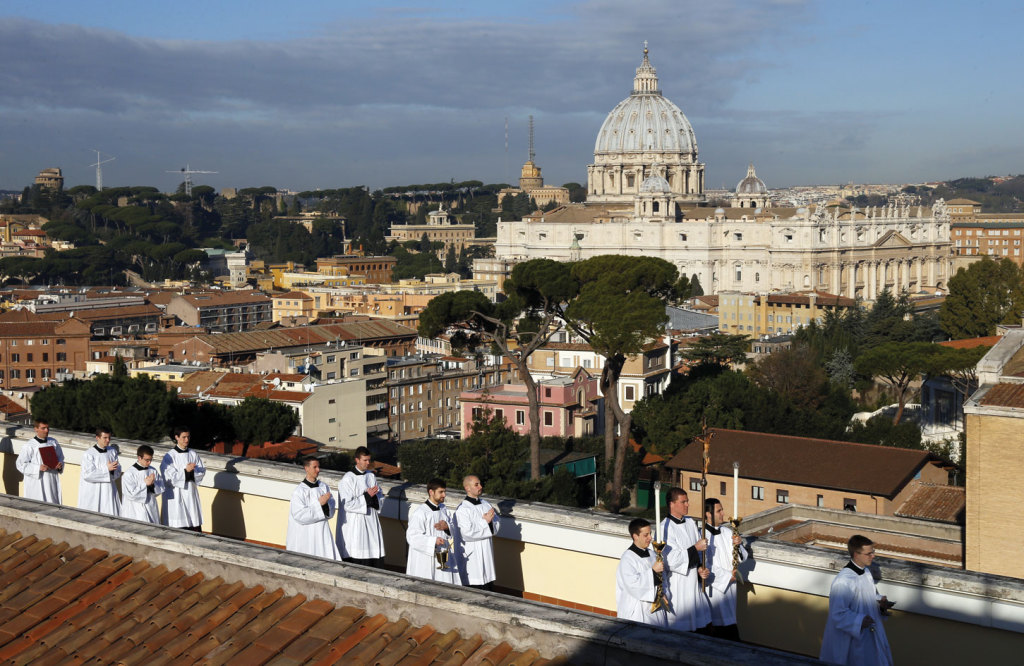
St Peter’s Basilica is seen in the background as seminarians lead a procession during the dedication of a new building at the Pontifical North American College in Rome.
Pope Pius IX founded the North American College in 1859. Its first home — until the outbreak of the Second World War when Pope Pius XII closed Rome’s “foreign” seminaries — was at a former Dominican and Visitation convent, the Casa Santa Maria, near the Trevi Fountains, today the residence of American priests pursuing graduate studies in Rome. Pope Leo XIII granted the College pontifical status in 1884 and, according to its entry in Wikipedia, it “was incorporated in the United States by a Special Act of the Maryland General Assembly in 1886 as a non-stock (not-for-profit) corporation under the name ‘The American College of the Roman Catholic Church of the United States.’”
When the Second World War ended and the “foreign” seminaries could reopen, Casa Santa Maria was too small to accommodate the growing number of US seminarians. To respond to this need, the American Roman Catholic bishops authorized the construction of a new seminary complex, on the grounds of Villa Gabrielli on the Janiculum Hill overlooking Vatican City, land the bishops had purchased in 1926, but still today subject in part to Holy See extraterritorial jurisdiction.
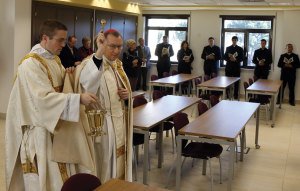
Cardinal Pietro Parolin, Vatican Secretary of State, blesses a classroom.
Now, more than 50 years later, again to respond to both the growing number of vocations and to the growing number of US dioceses wishing to send their men to Rome for study, a new building, know as “The Tower,” has been built on the campus. His Eminence Pietro Cardinal Parolin, the Holy See’s Secretary of State, officiated at the celebratory inauguration Mass on January 7.
Father Peter C. Harman from Springfield, Illinois, Formation Advisor and Director of Pastoral Formation and of Media Relations, gave me a tour of “The Tower” a week after its inauguration. Afterwards I talked with Monsignor James F. Checchio, Rector of the Pontifical North American College since 2006. (I first interviewed Monsignor Checchio for the Oct. 2009 issue of ITV.)
Your press release announcing the inauguration of your new building said that 2014 was the College’s 4th year in a row at housing capacity. What is that capacity?
Mons. James F. Checchio: Two hundred and fifty-two students.
With the new building, what will your housing capacity reach?
Checchio: As you have just seen on your tour with Father Harman, the new building doesn’t include additional student bedrooms. It is for formation purposes: state-of-the-art, brightly-lit classrooms for instruction, but also for pastoral formation for each class year, a new chapel for personal prayer, soundproof rooms for homily practice, a reading room with a 360° view of Rome, new offices, a large meeting room, and two new guest apartments for vocation directors or North American bishops here on business in the Vatican.
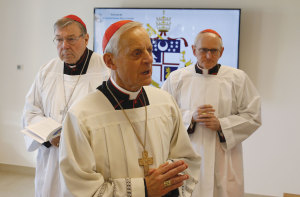
Cardinal Pell, Wuerl and Harvey attend the dedication of the new building.
Can you provide me with some enrollment statistics? For example, how many seminarians were enrolled here in 1953?
Checchio: The College on the “Hill” was built to house 300 seminarians, but, of course, the facilities weren’t filled right away. Moreover, over time, several student bedrooms have been taken over to make faculty apartments each with a bedroom, sitting room, office and bathroom. In 1953 there were only four faculty members; now we’re 22.
What was your enrollment’s lowest point?
Checchio: In the late 1980s, it was down to 115/120. When I became Rector in January 2006, we had about 150 seminarians. So now there’s an upward trend…
Checchio: Of the 178 dioceses in the United States, 101 — many more than before — are now sending their men to study in Rome. Usually the bishop chooses who should come to Rome.
Does Washington, D.C., the archdiocese of Cardinal Wuerl, still send you the most students?
Checchio: Yes.
About the new building: Does it have a name? Who was the architect? Who designed the stained-glass windows and chose the subjects to be depicted?
Checchio: The building doesn’t have a special name. The architect was Marco Silvestri. The project design phase began in 2012.
Construction, which took 18 months, began in the early summer of 2013. Rolf Rohn, an American, designed the windows. He works in Florence, so the windows were made there.
After consultation with the rest of the faculty, I made the final decision about their subjects: the Sacred Heart of Jesus and the Immaculate Heart of Mary. The College’s motto on our coat of arms says “Firmum Est Cor Meum”(“My heart is steadfast”). Chiseled on the outside of the new building are St. Paulinus of Nola’s words of encouragement for priestly ministry: “Resonare Christum Corde Romano” (“Echo Christ with a Roman Heart”). The other four depict Pope John Paul II who came to the College once in 1981; Mother Teresa of Calcutta, who came here several times (and our seminarians, including me as a student here, have regularly served at her soup kitchens around Rome); the Venerable Bishop Fulton Sheen and Venerable Father Michael McGivney, the Founder of the Knights of Columbus, both of whom are under consideration for sainthood.
The chapel’s relic is a small piece of the cassock that Pope John Paul II was wearing the day he was shot. It was given to us last year on the day of his canonization. It was only logical that the chapel be named for him. His post-Synodal Apostolic exhortation Pastores Dabo Vobis on the formation of priests today, published on March 25, 1992, is fundamental; he’s a role model for our seminarians. During his lifetime he was always very attentive and hospitable to us, inviting us to Mass with him, meeting the parents of our students and much more. He had boundless energy.
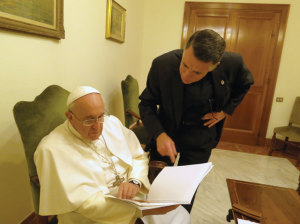
Monsignor Checchio explaining the design plans for “The Tower” to Pope Francis.
Does Pope Francis plan a visit here before he goes to the US in September?
Checchio: I don’t know. I had a nice meeting with him just before Christmas. He blessed a symbolic brick from the new building for us, and I showed him plans and pictures. We mostly talked about priestly formation, but also about his upcoming trip to the States, so I said to him, “We’d love to pray with you up on ‘The Hill’ before you go,” to which he answered, “Maybe we’ll meet in the grotto in the Vatican Gardens and pray together.” So we’ll see. I wrote him a little note to remind him.
Can you tell me about Mr. and Mrs. James Mulva, major donors for this project?
Checchio: James is the retired Chairman and Chief Executive Officer of ConocoPhillips. James and Miriam and their two children are a great Catholic family. They love education and they love the Church. They have frequently sponsored scholarships through the dioceses. They are good, humble people of faith.
I know that Mr. Mulva has been generous to his alma mater, the University of Texas, but how did they come to be interested in PNAC?
Checchio: They became familiar with the College more than 20 years ago when their newly ordained associate pastor arrived at St. John Church in Bartlesville, Oklahoma, straight from his studies here. This then-young priest, born and bred in Oklahoma, Daniel Mueggenborg, now a monsignor, later served as the vice rector for administration here, and introduced the Mulvas to me.
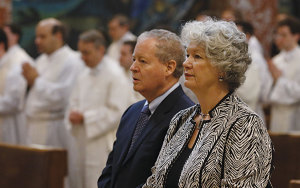
James and Miriam Mulva of Bartlesville, Oklahoma, who donated $8.5 million to North American College.
Not to be too nosey, but could you say what percentage of the project did their gift cover?
Checchio: Their generous $8.5 million gift paid for a good part of our new 10-story tower, but that’s only part of a $40 million fundraising project for improvements here — like a new roof and new plumbing — and the same for Casa Santa Maria downtown. We’ve raised $26 million so far. The Mulvas’ gift got the initiative rolling. The College is exempt from US federal taxation, and contributions to us are tax-deductible.
Which US cardinals attended the inauguration?
Checchio: Cardinal Wuerl, Cardinal O’Brien (he is a former Rector here), Cardinal Law, and Cardinal Harvey; Cardinal Pell of Australia was also in attendance as, of course, was Pietro Cardinal Parolin, the Holy See’s Secretary of State.
You have been rector since 2006. How has your job changed during these nine years?
Checchio: We now teach to a full house. Our seminarians are enthusiastic, and that’s attracted and encouraged many others to want to study here. Our seminarians study theology, philosophy, ancient languages, Church history, etc., downtown, but we’ve started to teach courses on counseling, parish administration, and social issues here on campus.

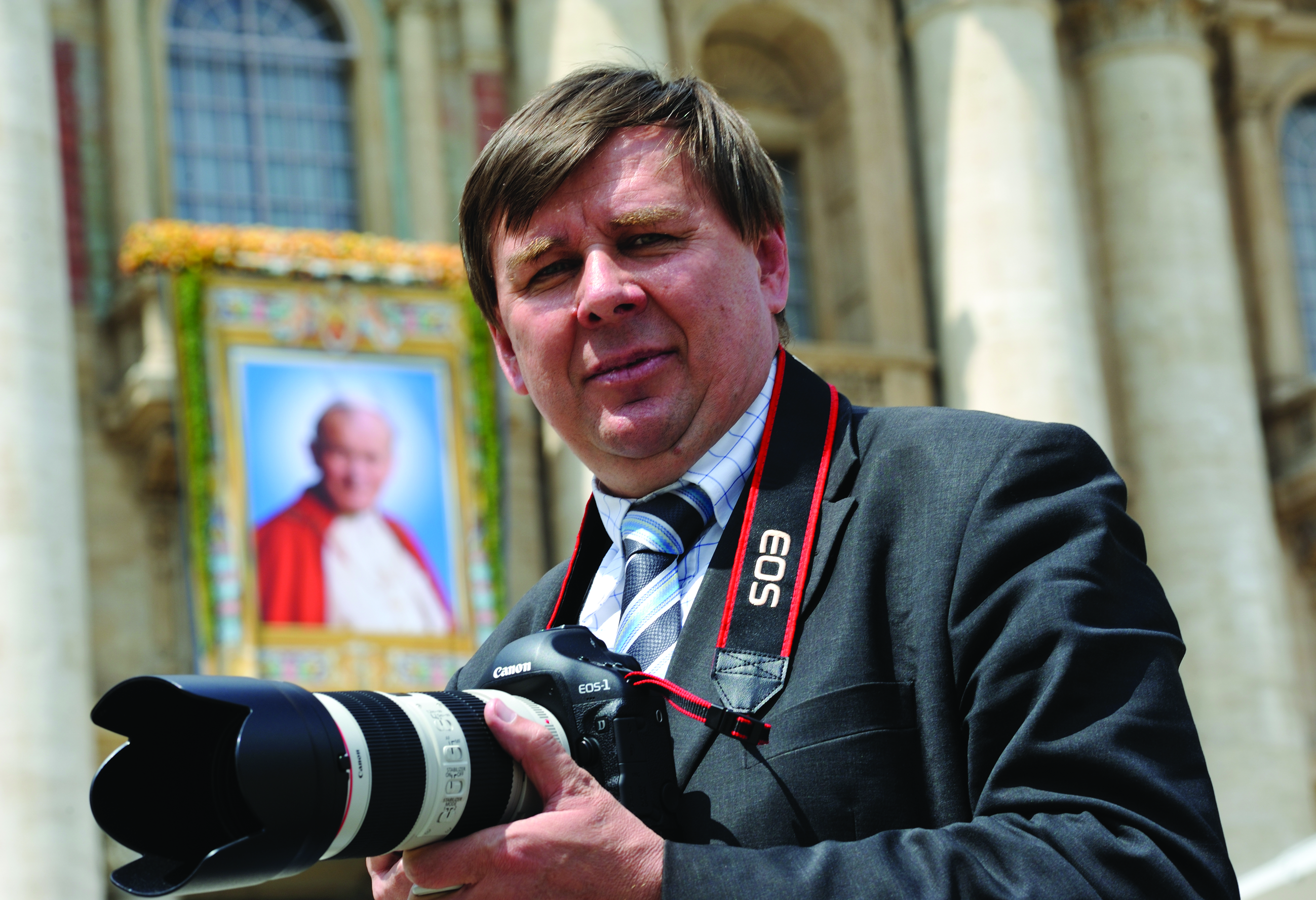
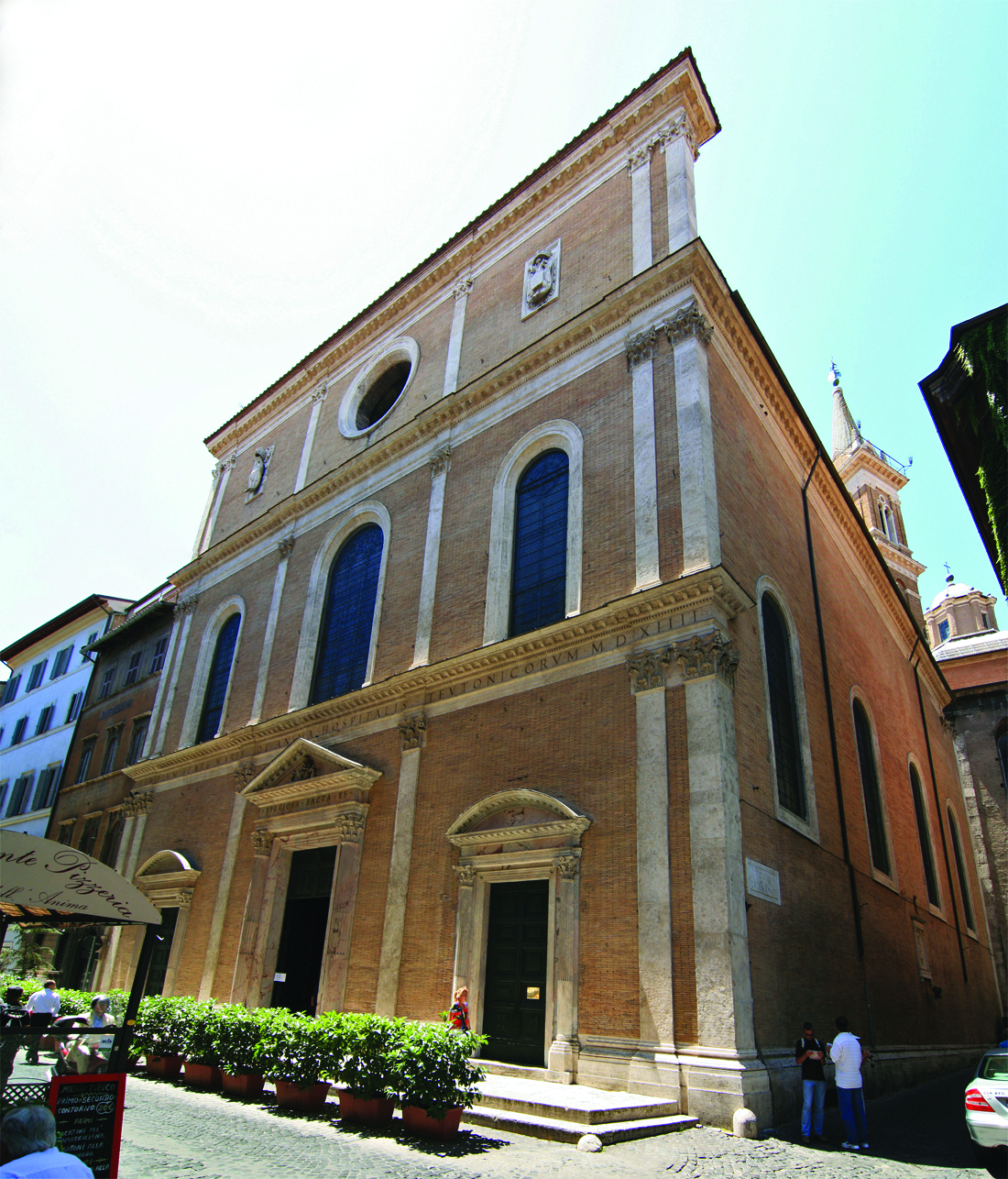
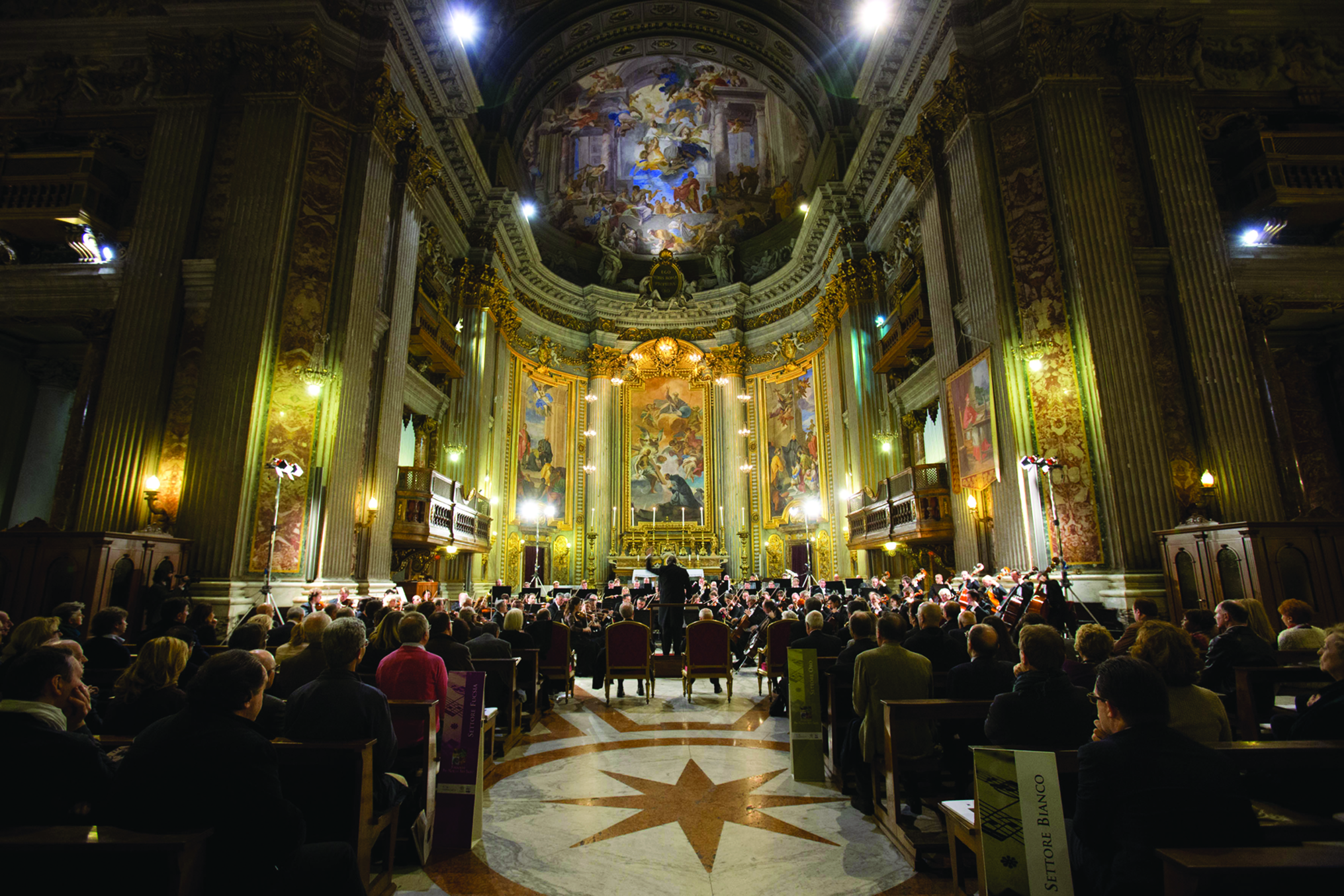
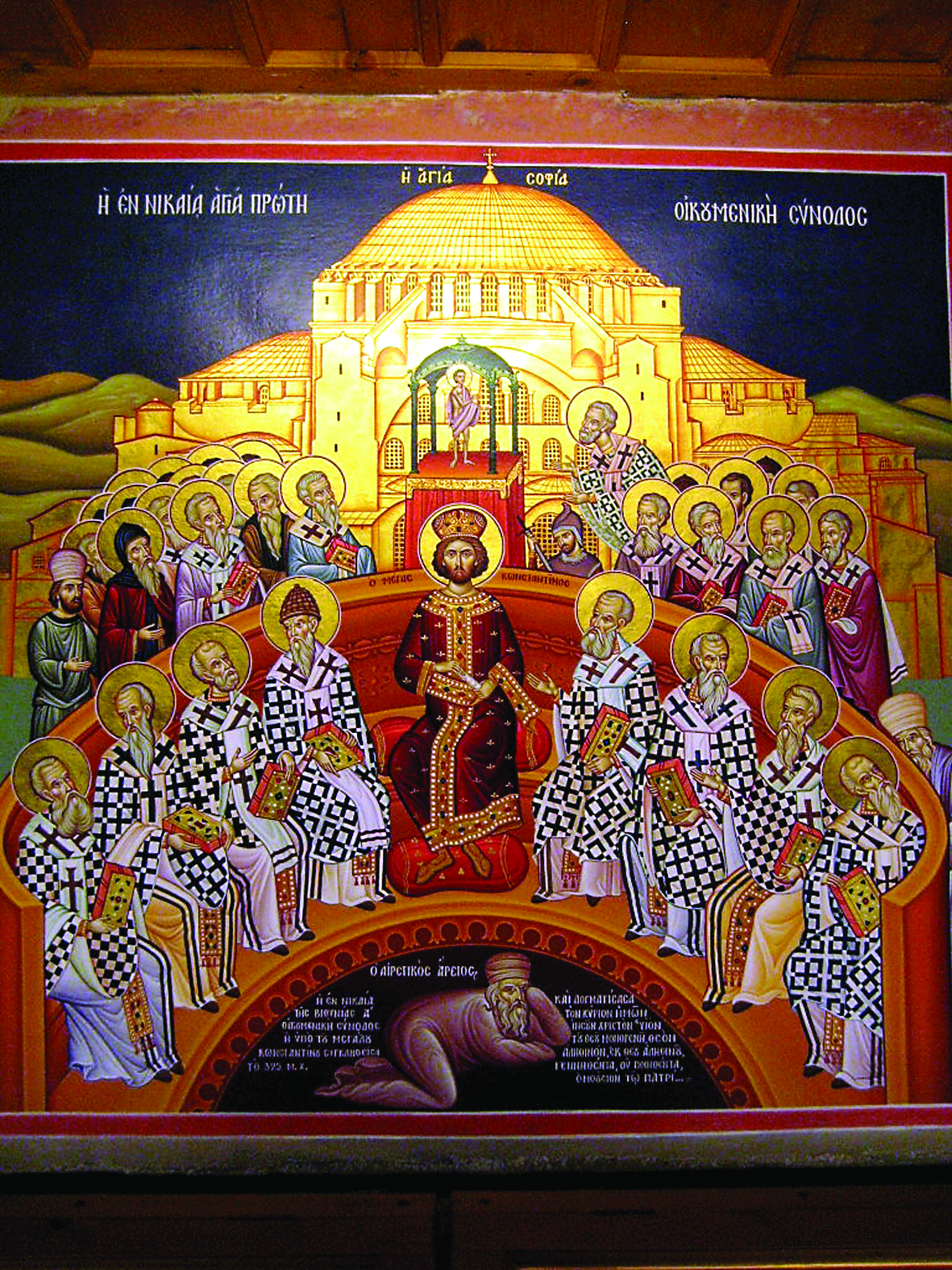
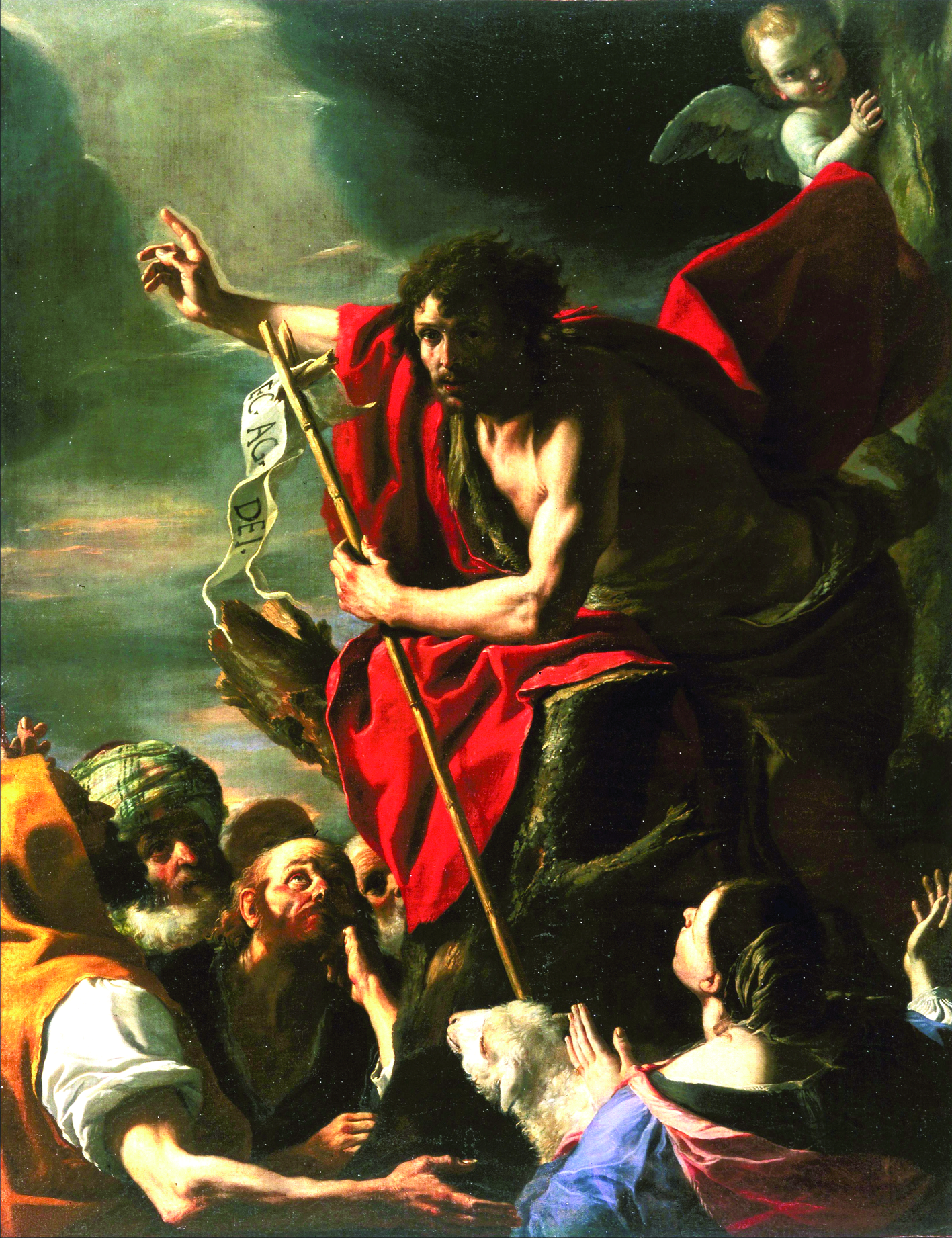
Facebook Comments